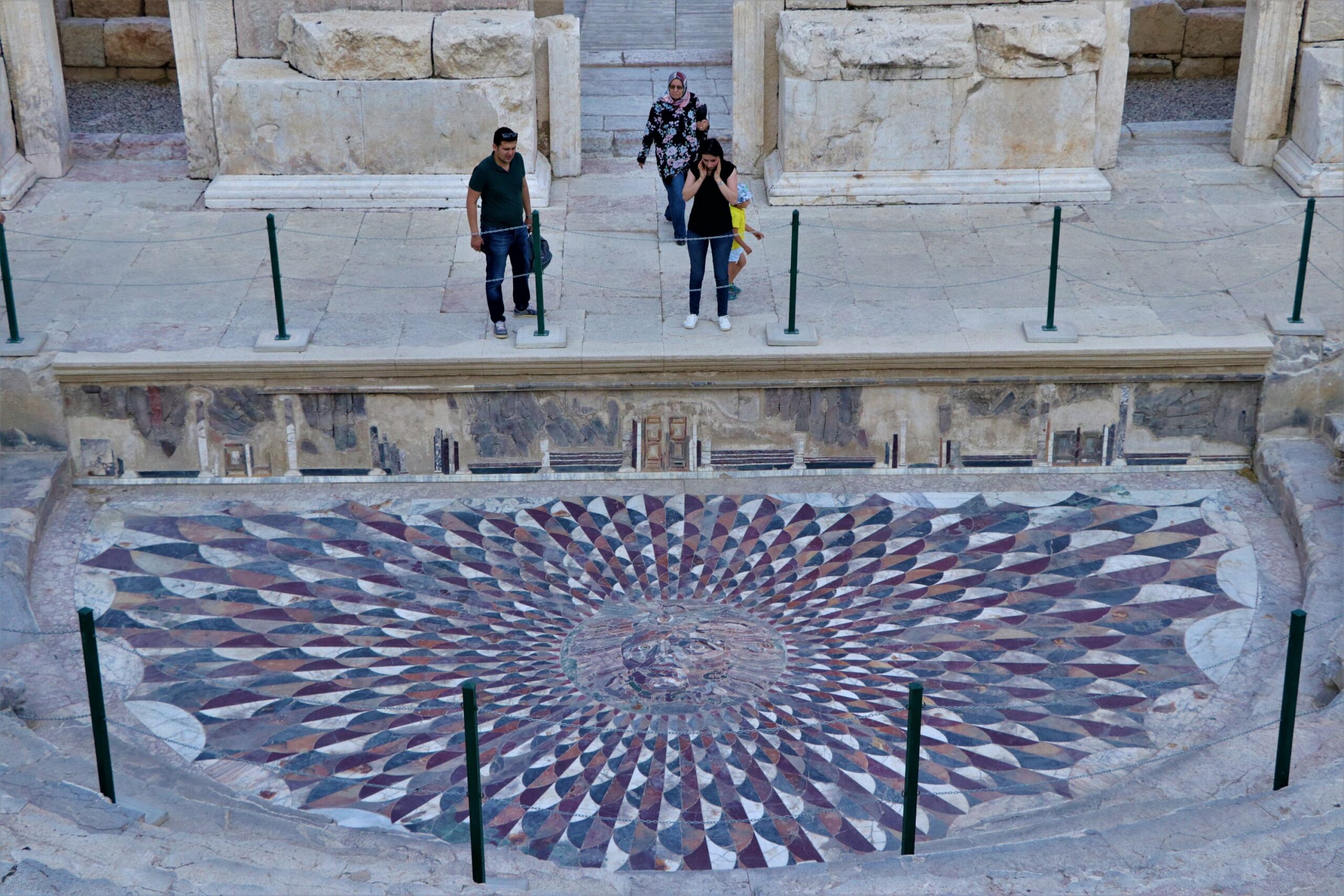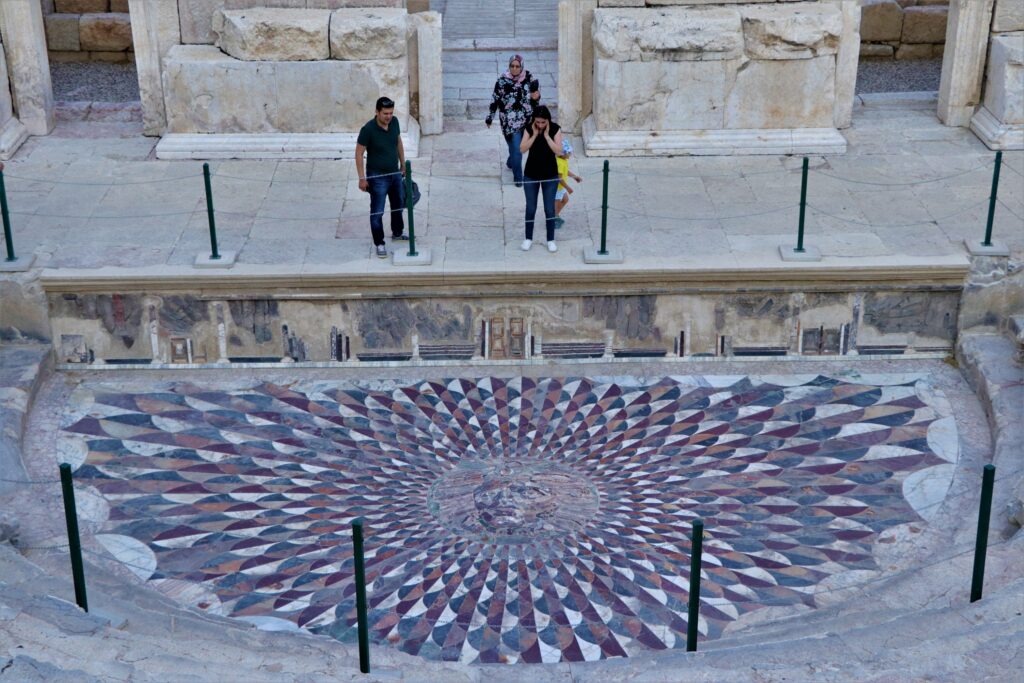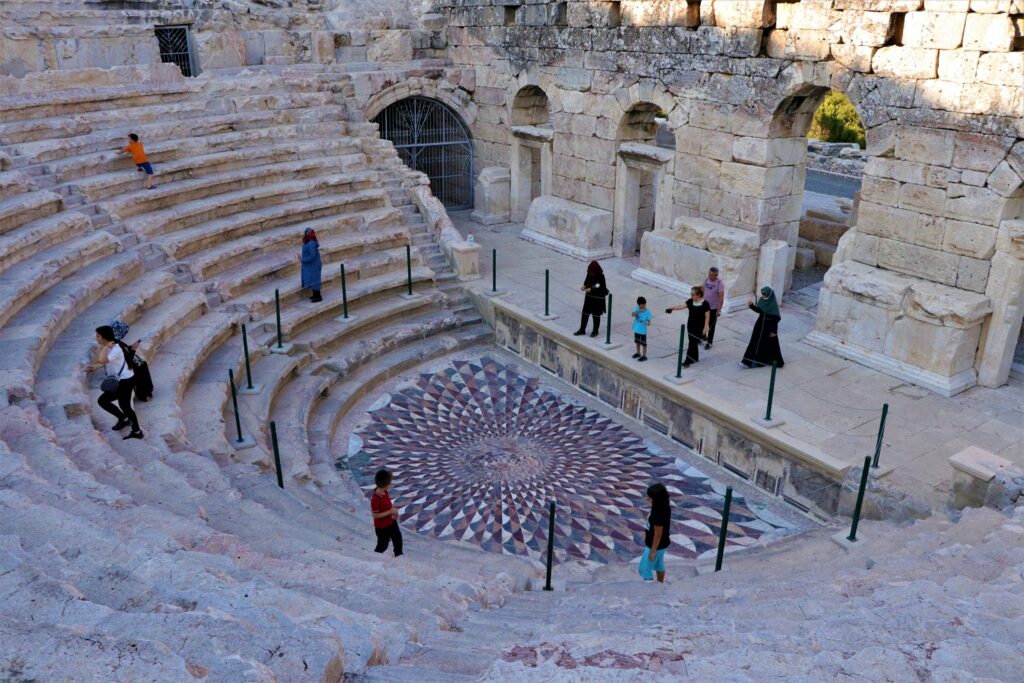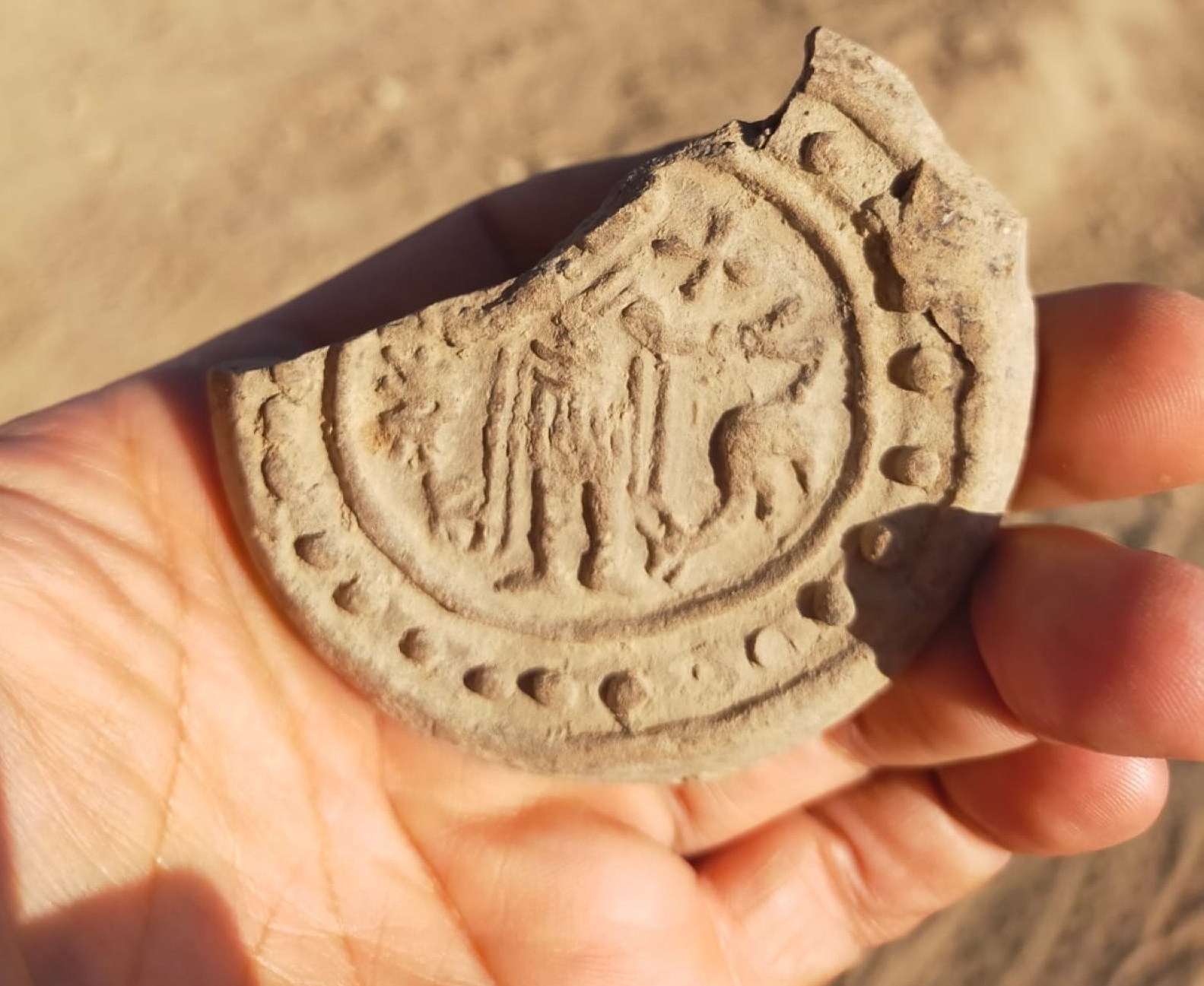To protect from weather damage, the Medusa mosaic in the ancient city of Kibera, situated in Turkey’s southern Burdur region, is covered by five separate layers for nine months a year. The mosaic will be open for visit in the summer and will continue to attract visitors until September.
We can see the “serpent-haired, sharp-toothed female monster” of Greek mythology on this nearly 2000-year-old mosaic and an orchestra section of the 3,600-seat Odeon used as a concert hall, parliament, court, and indoor theater in ancient times.
According to legend, the mosaic was created in the first century A.D. using colorful marbles and the opus sectile. Materials were cut and inlaid into walls or floors to create a picture or pattern. The Medusa mosaic is thought to be one-of-a-kind, according to folklore, since it can “turn malicious people who look her in the eye into stone.”

“In 2012, after three years of excavation work, the odeon structure was uncovered “. Associate Professor Şükrü Özüdoğru, head of the excavation team at the ancient city of Kibyra and archaeology academic at the Mehmet Akif Ersoy University (MAKU) said to Anadolu Agency (A.A.).
Kibyra has become famous among archaeological circles because of the find, which was rebuilt with the help of the Culture and Tourism Ministry, according to Özüdoğru. He also noted that The Medusa was a unique mosaic flooring made of thin marble plaques, an Opus Sectile technique that survives today as far as we know. That’s why it is enshrouded for a certain period each year for protection.
The Odeon and mosaic were among the essential structures uncovered in the excavations that have been in place since 2006, according to Düzgün Tarkan, deputy director of the excavation team. Tarkan described the discovery as “the pearl of the old city of Kibyra” and said it had attracted tourists from all over the country.
“We can see the Medusa mosaic in its original shape today,” Tarkan noted of the Odeon. With each passing day, interest in the ancient city of Kibyra grows more thanks to the Medusa mosaic. Thanks to another geometric-patterned mosaic floor of 560 square meters (6,028 square feet) just in front of the Odeon, we were able to get accurate information on the Odeon’s name and construction time.”
“We can say that the Medusa mosaic odeon served the upper strata of the city based on the seating arrangement and capacity,” Tarkan concluded. With its Medusa mosaic odeon, a stadium that could contain 10,400 people, a theater that could hold 8,000, an agora with three terraces, and a late Roman bathhouse, the ancient city of Kibyra takes tourists on a historic voyage through history.”
“It is astonishing that such a masterpiece was made in antiquity,” Alihan Kotan, a visitor from Erzurum’s eastern province, said he came to Kibyra to feel its history when he heard about the opening of the Medusa. Another visitor, Bura Han Yapc, expressed his admiration for the Odeon and Medusa, noting that the Odeon’s sound acoustics were beautiful.

























